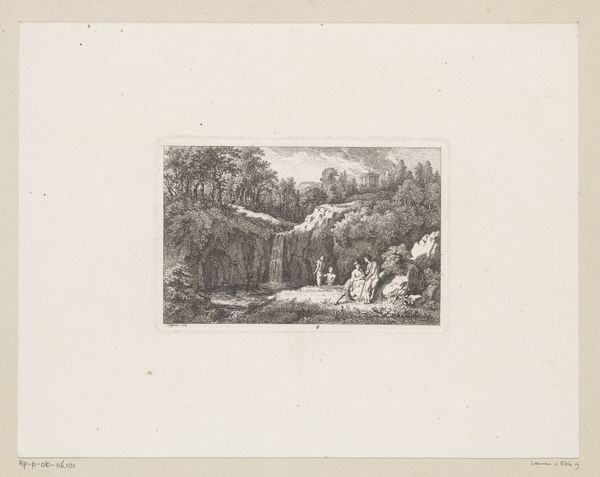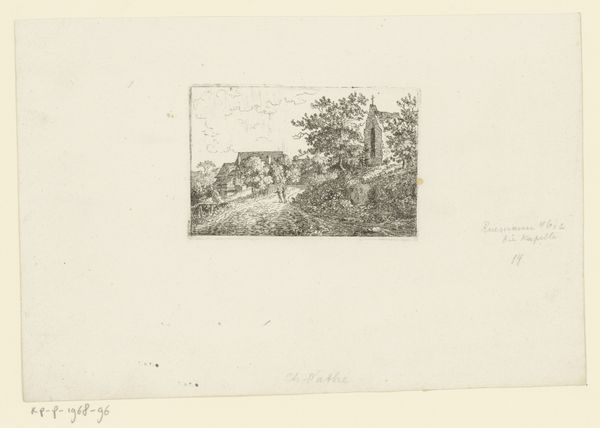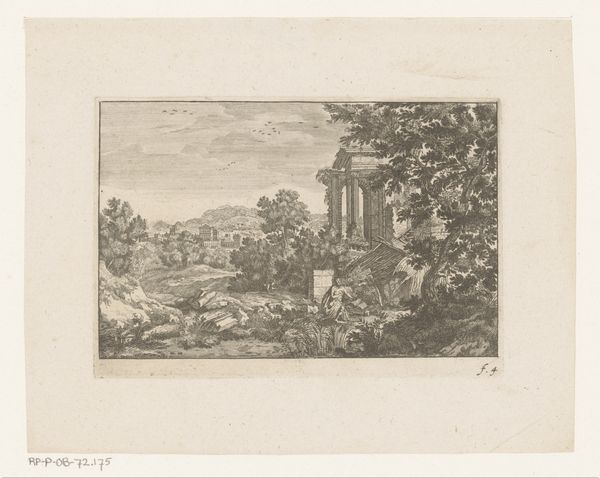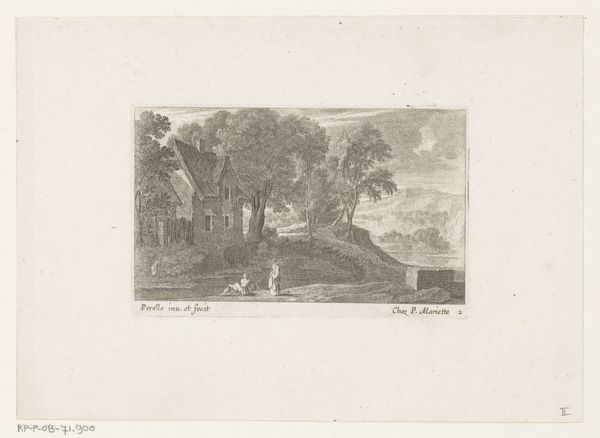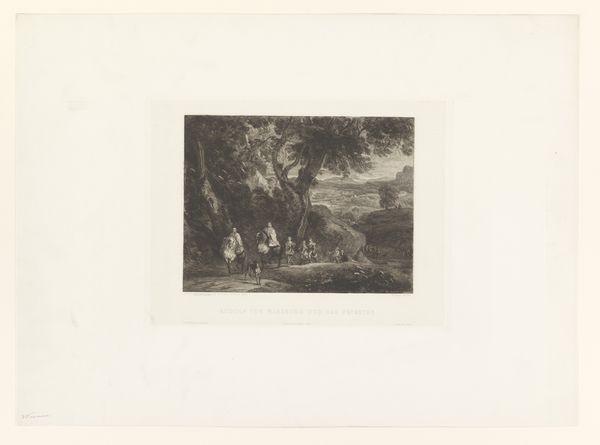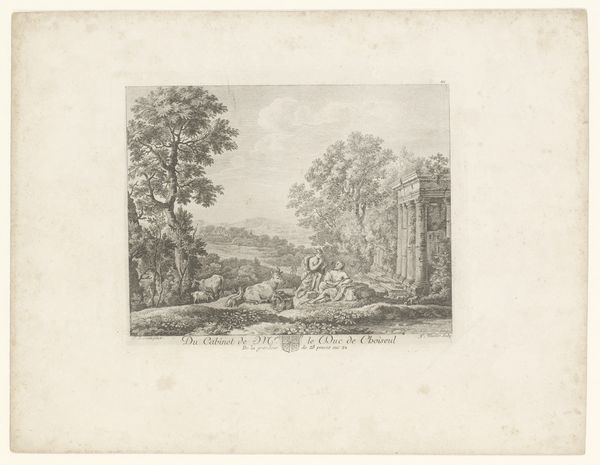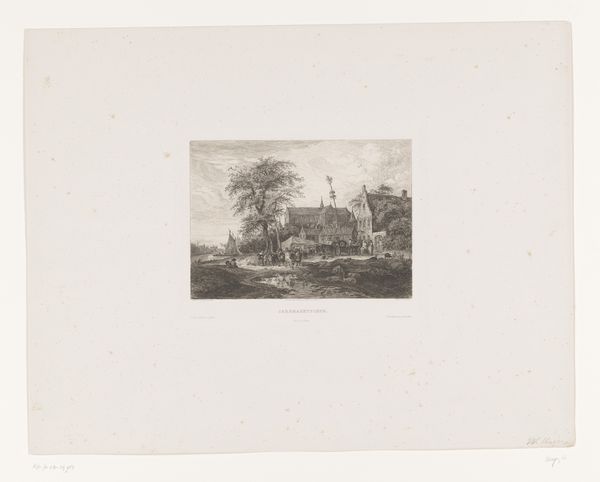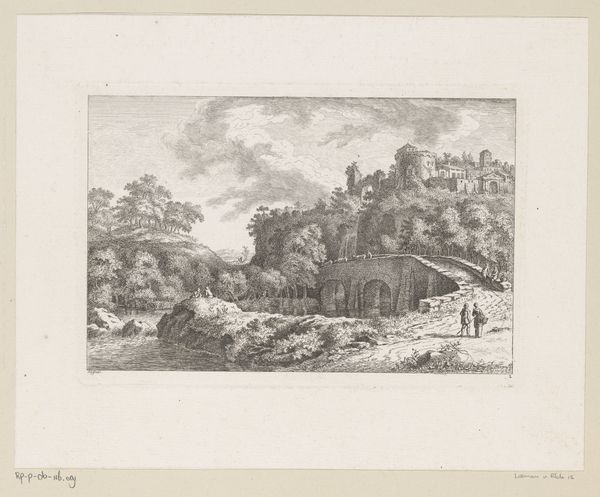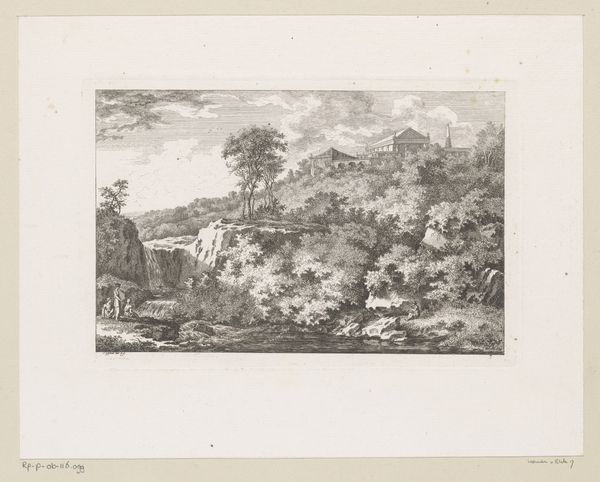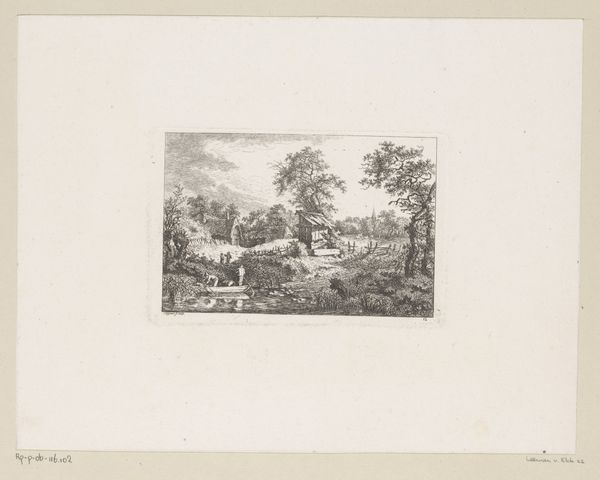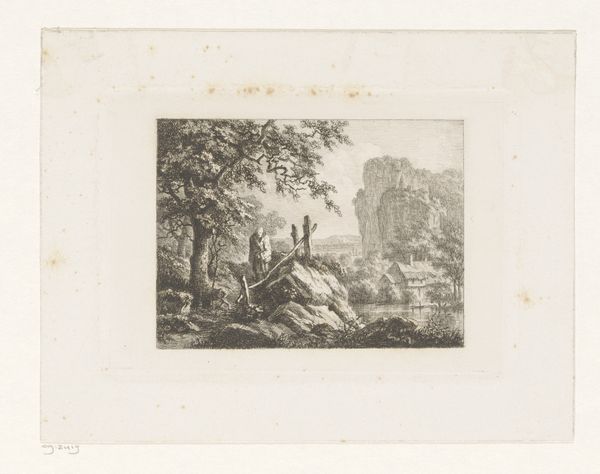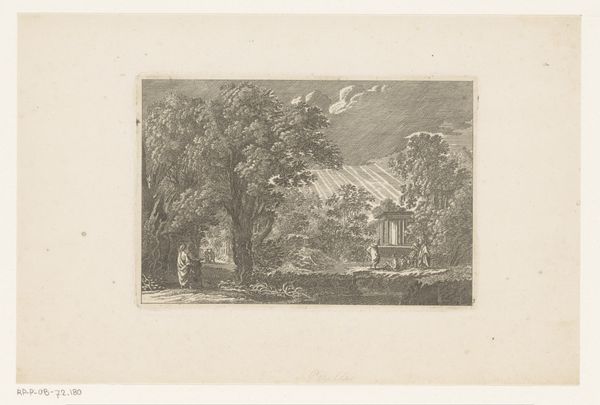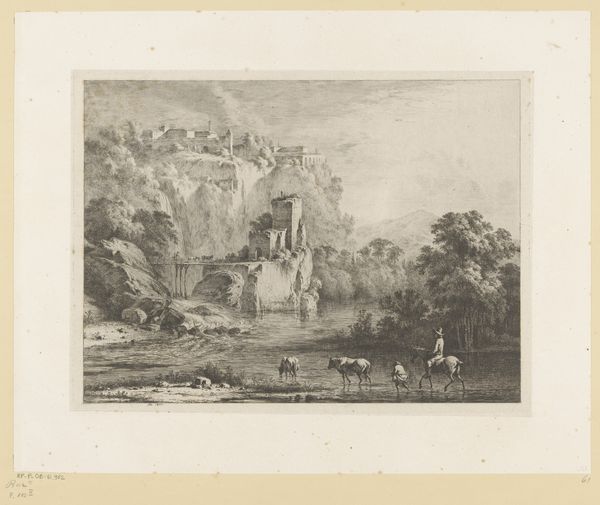
Dimensions: height 138 mm, width 176 mm
Copyright: Rijks Museum: Open Domain
Editor: So, this is "Landschap met ruïne en drie figuren met een hond" by Johann Andreas Benjamin Nothnagel, dating roughly from 1739 to 1804. It's an etching on paper. It strikes me as quite romantic, with a touch of melancholy in its depiction of ruins. What do you see in this piece? Curator: The ruined structure dominates, but I am intrigued by the choice of printing as medium. Printmaking at this time becomes a tool to reproduce images on a grand scale to a much larger audience, how does that inflect what you see? Editor: Well, knowing it was widely reproducible makes me think about accessibility of art to the common person, but I'm unsure of how that fits within this landscape. It doesn't seem like overtly political imagery, what am I missing? Curator: Not necessarily *overtly* political, but certainly part of the emerging visual culture. Consider the vogue for the picturesque during that era, fueled by increased travel and a growing interest in national identity. How did the nobility perceive it? Were their tastes influenced by "foreign" trends? The etching becomes an object that signals status through its aesthetic sensibilities as much as its representation. Editor: Ah, so even a seemingly simple landscape etching can carry weight within broader social and cultural conversations! By owning this image and engaging with ideas around aesthetic tastes and place it indicates where one resides on the socio-political hierarchy. It is a signal and marker of wealth. Curator: Precisely! The ruin, then, is not just a pretty scene, but a site of contemplation for social change and, printed and distributed, an active participant in shaping it. The proliferation of such images really democratized art, spreading tastes to the aspiring merchant classes, who wished to signal belonging in elite echelons. Editor: I never would have considered the distribution and reproduction of an artwork as an indicator of social trends. Thanks, that was incredibly insightful! Curator: Likewise, reflecting on it helps me understand Nothnagel’s contribution to a growing industry of aesthetic dissemination.
Comments
No comments
Be the first to comment and join the conversation on the ultimate creative platform.
